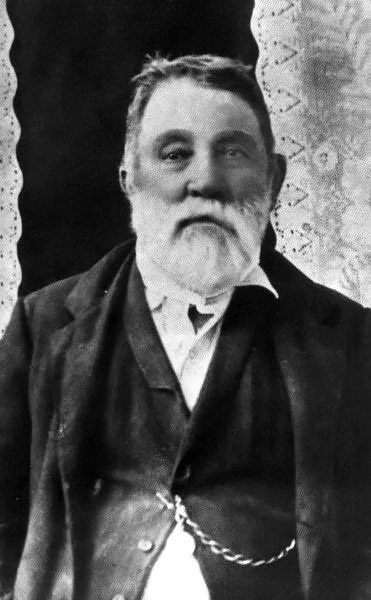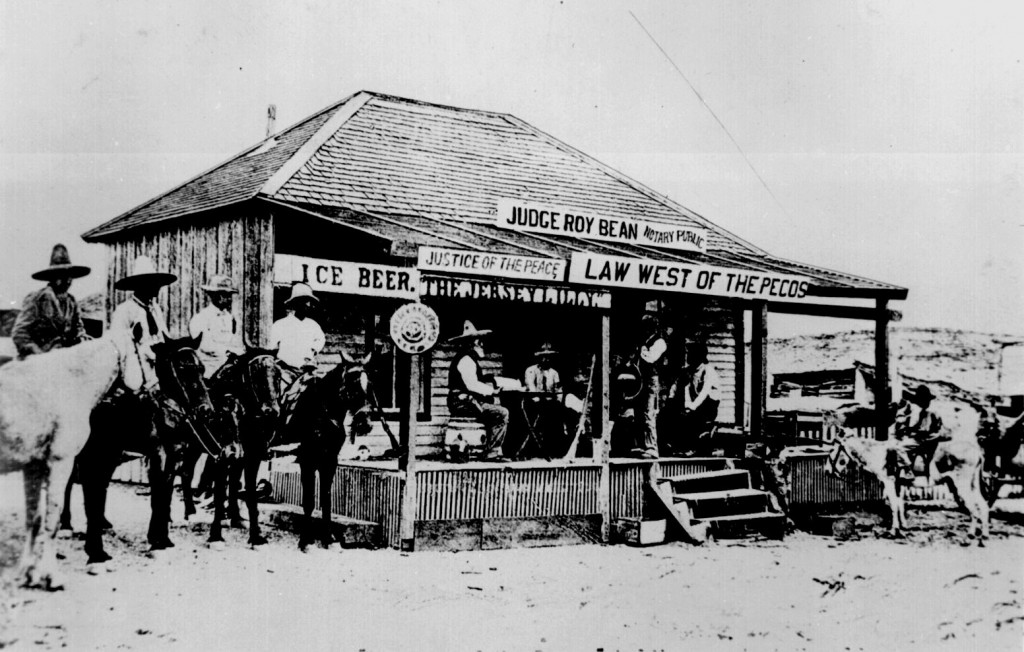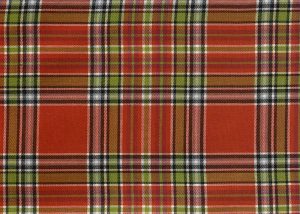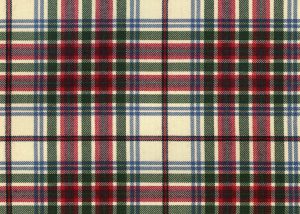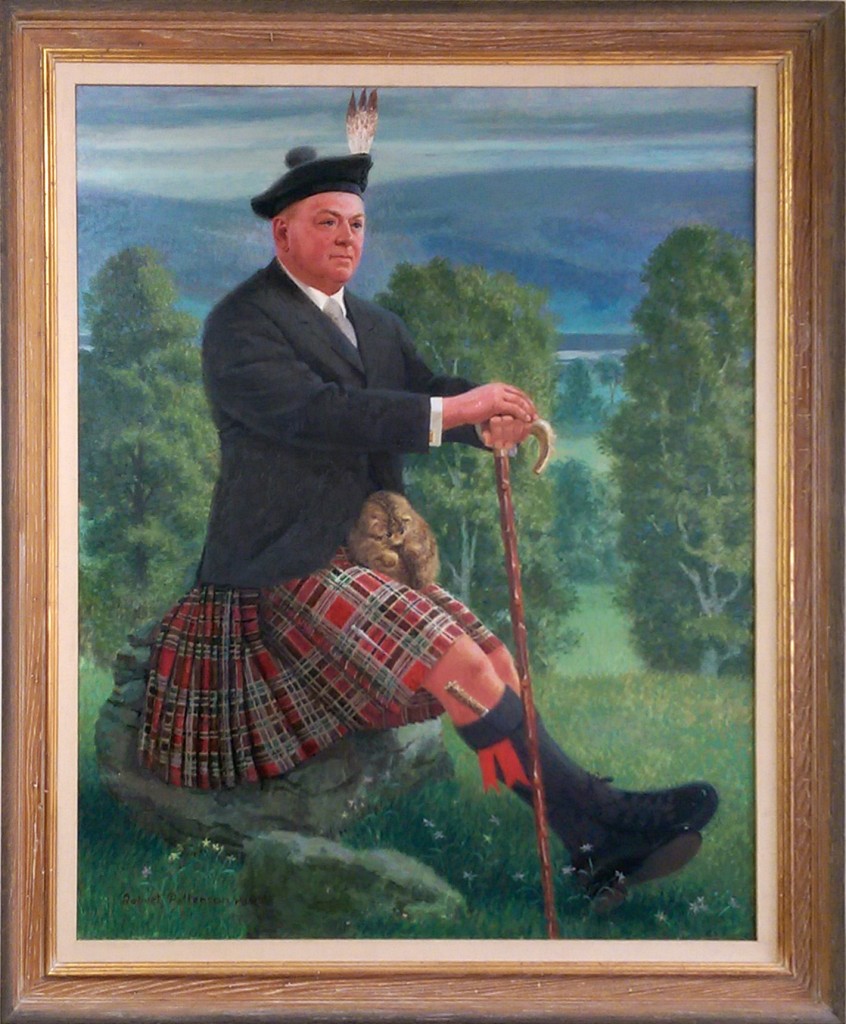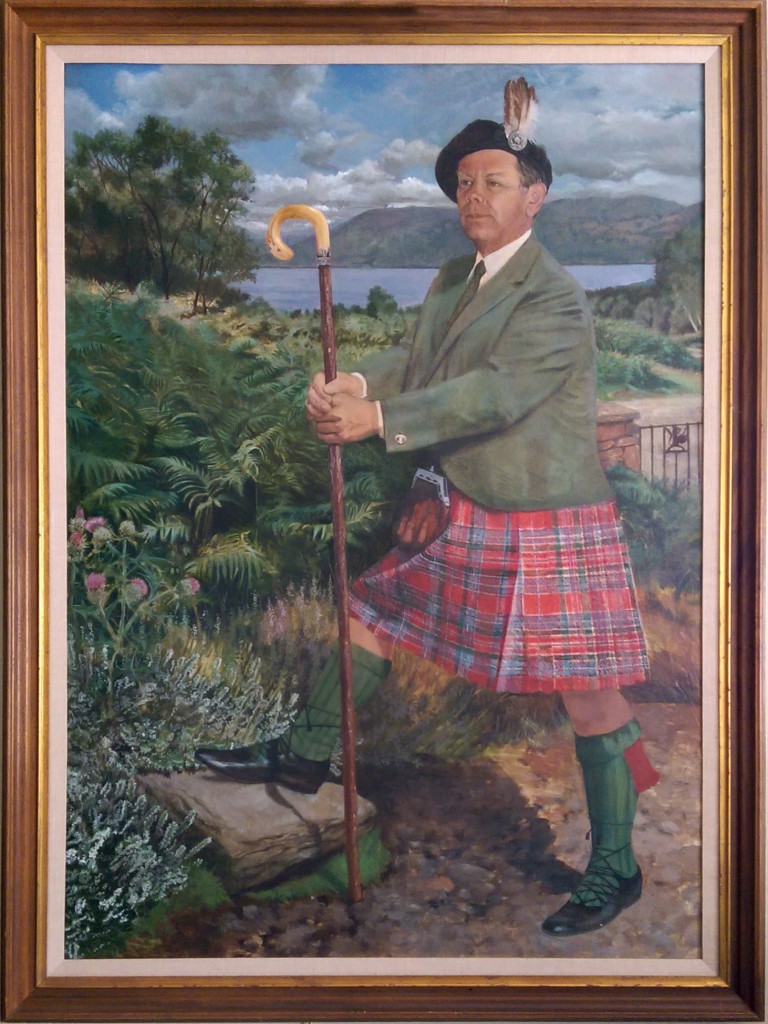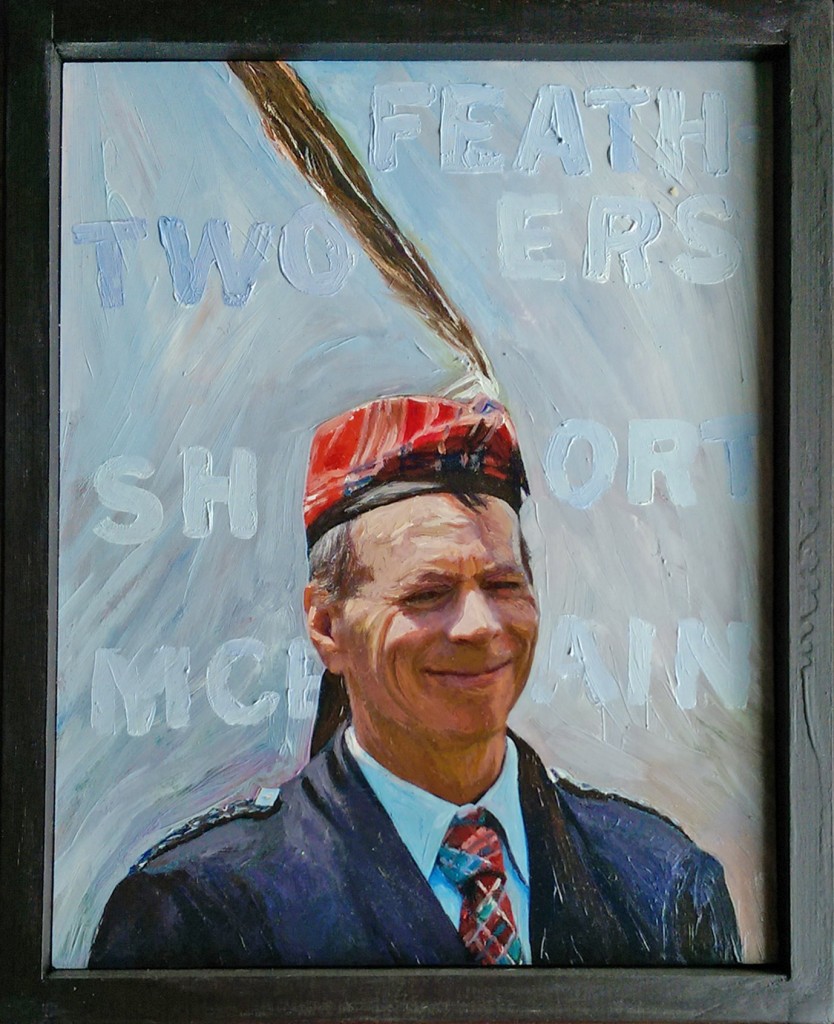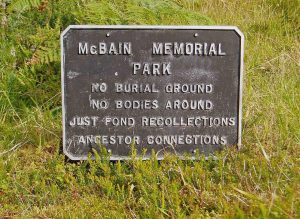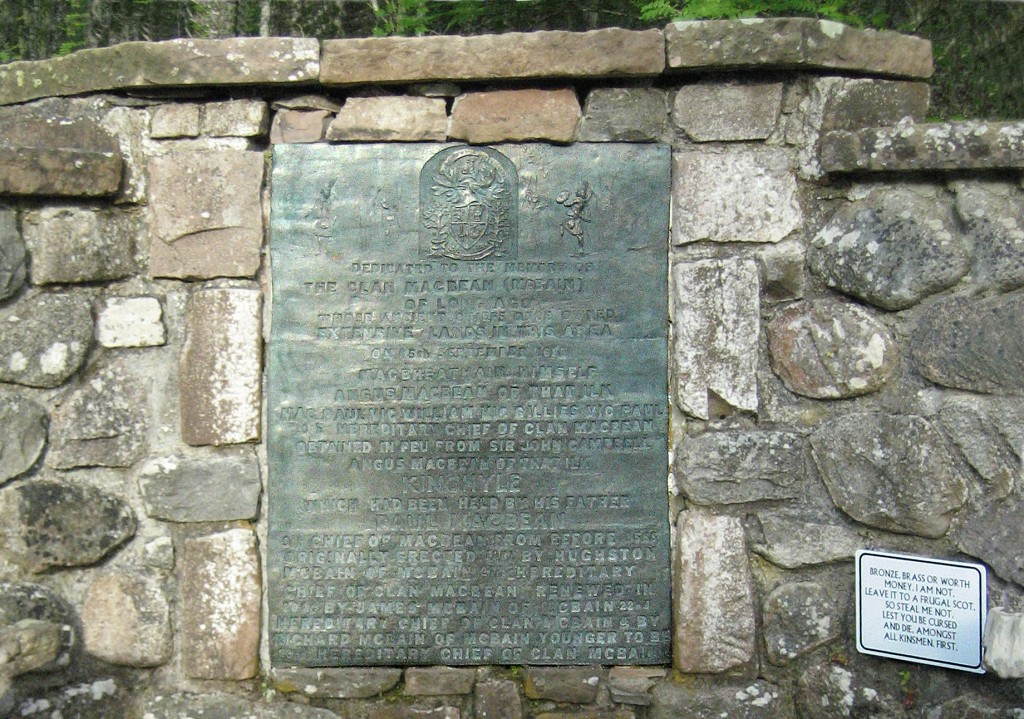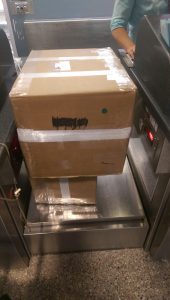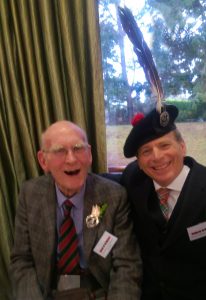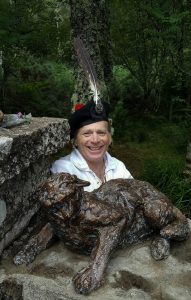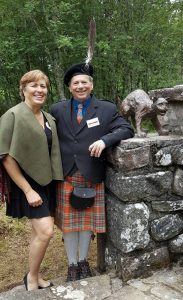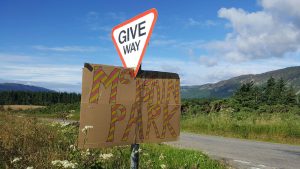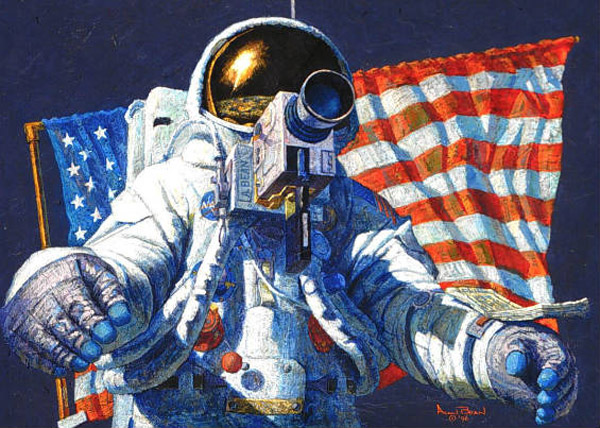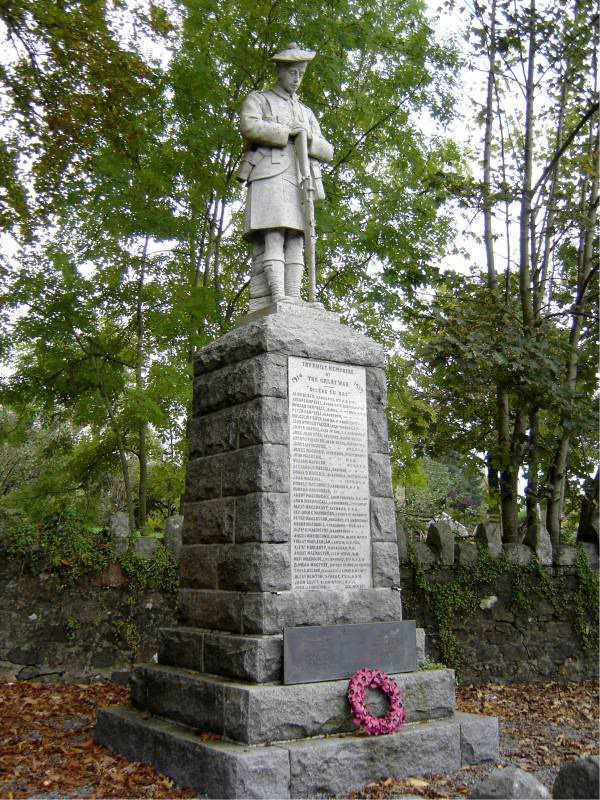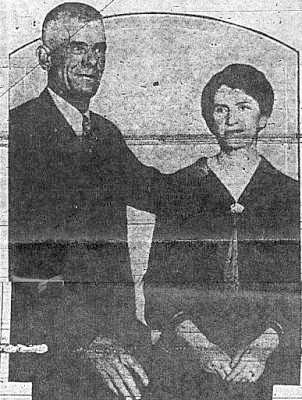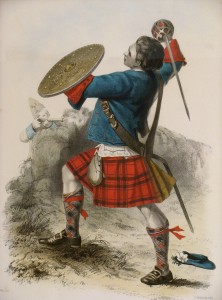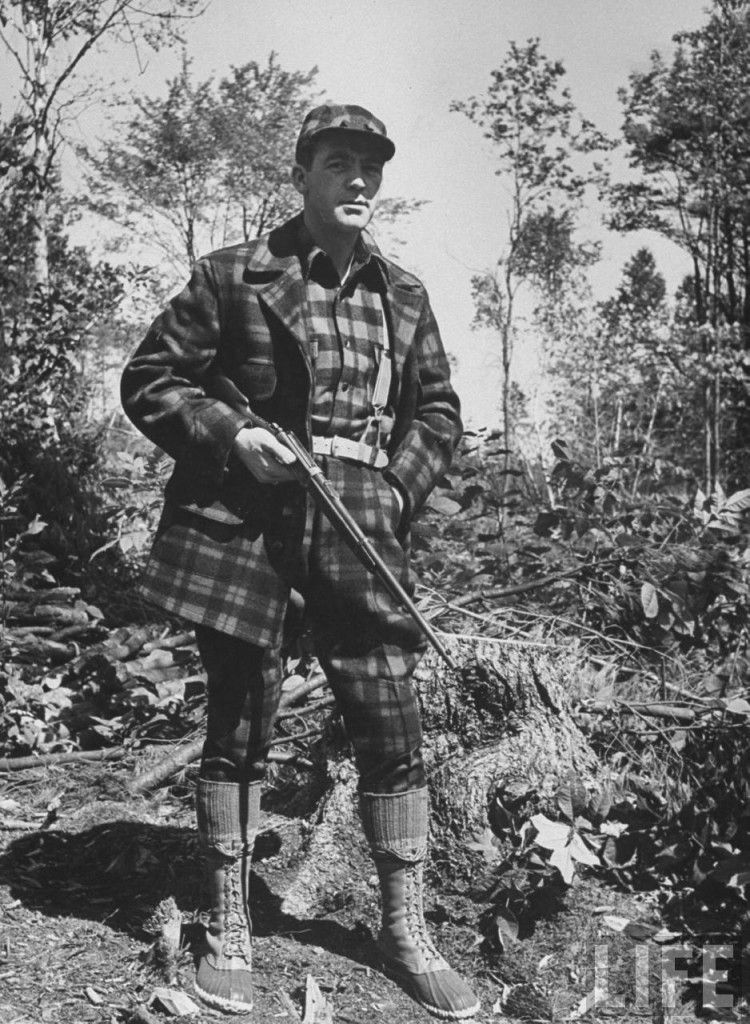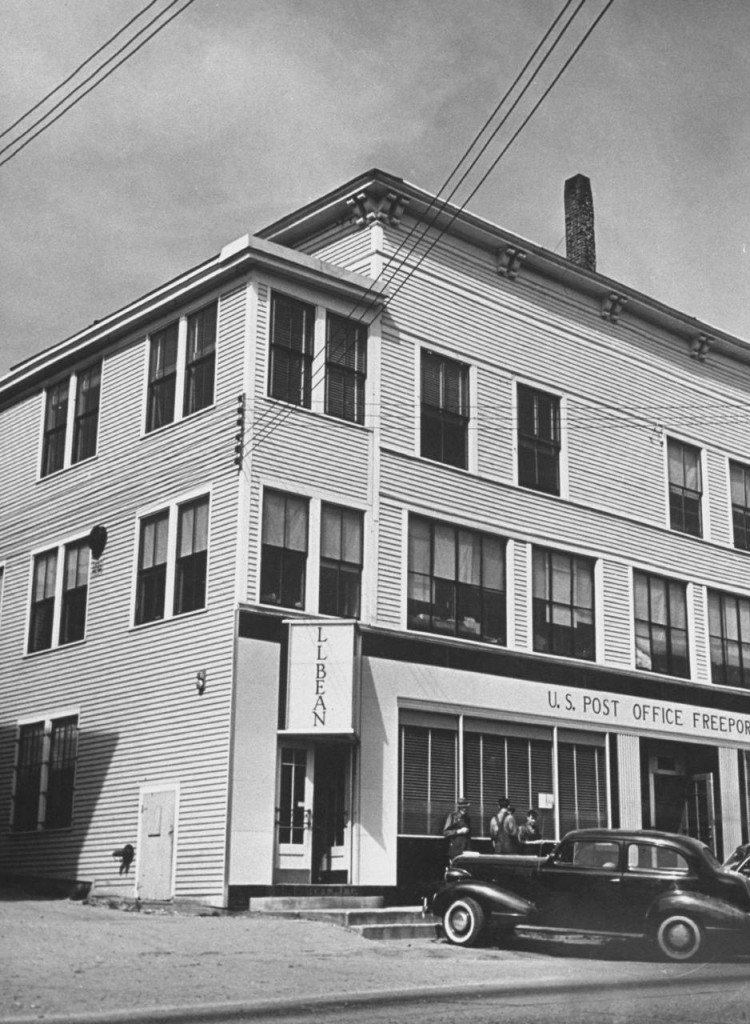Members Login
The members only area has moved to our shop site, please use the following link
Our Organization
Clan MacBean Inc.
This organization was started as The John Bean of Exeter Family Associationbut eventually became dormant. At that time there was no recognized Chief of Clan MacBean.
Bernie Bean started Clan Macbean in North America, Inc.as a way to resurrect and expand the old association. The Organization is controlled by the membership through the Board of Directors and the elected officers.
In 1996 the website was first launched and as more people around the world got in contact we changed our name to Clan MacBean, Inc. to better reflect the nature of the organization.
With this name change we also that we also recieved a new tax status as a non-profit.
list of Officers, Directors-Executive Committees since 1896
Brief Statement of Our Tax Status
The purpose of Clan MacBean, Inc. is to educate and inform persons of contributions to Scottish history, heritage and culture made by members of the ancient Clan MacBean of Scotland,
the ancient Clan Chattan Confederation of Scotland (of which Clan MacBean is a constituent) and descendants of both through a variety of educational activities including but not limited to the dissemination of histories, genealogies,
works of art and other appropriate undertakings.
To foster these activities, the IRS has granted Clan MacBean, Inc. status as a 501(c)(3) charitable educational organization.
This means that contributions to our organization are tax deductible and may be claimed as charitable deductions on the contributor’s federal income tax.
Clan MacBean Library
This is your access point to our Ancestor Photo Galleries with over 3000 ready-to-download old photos, our Lineage Document File, and our History and Genealogy Trees.
The complete first Volume of Bernie Bean’s Clan MacBean in North America is here in tree form, as well as updated lineages from Volumes II, and III with additional new research.
While you’re here check out the Register Archive of all of our old Clan newsletters, complete with stories and photos, and use the links to our current Y-DNA Project Pages.
Also in the Members’ Section, you will find the History of our Clan, and be able to meet our American Scottish Chief.
All this is online in the Member Section. Not a Member? join now!
The Register
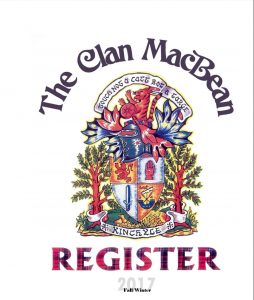 Members of the Clan MacBean receive access to our bi-annual electronic newsletter The Clan MacBean Register.
Members of the Clan MacBean receive access to our bi-annual electronic newsletter The Clan MacBean Register.
In it you will find articles about people in the clan, historical figures, and Scottish history, along with Genealogical queries
and updates of births, marriages, and deaths and news of upcoming events such as our Clan Gatherings and Festivals.
We are always looking for new ideas and information to add, so if you have something you’d like to contribute, please contact our editor.
Please feel free to peruse a recent Register to get an idea of what these newsletters are like.
Tartans
Family tartans have a fairly recent history (if over 200 years is recent). Historical evidence of tartan material goes back to 1600 and before, but there seems to be no evidence that any particular design or pattern could be associated with a clan. There is some evidence that in the early 1700’s some patterns became associated with the Chief, and use of that design was limited to the Chief and his family. The only remaining use of this custom is the British Royal family Tartan which is designated exclusively for the Royal family and cannot be used by others in the UK. After the failed attempt to regain the British throne by Charles Edward Stuart, the government moved to outlaw “things associated with the recent rebellion” including bagpipes (except in government controlled military units), all manner of weapons, and tartan worn by men. This ban was lifted in early 1800’s and Scots rushed to proclaim their Scottish heritage by wearing the now legal tartan. Books were published showing which tartan went with what name, and where none was known to exist, the tartan weaving business was happy to create a pattern for your family.
The MacBean tartan appeared at this time and it was in some ways similar to the Mackintosh tartan. It was considered quite bold and striking as befitting a “warlike Clan. The earliest recorded sighting of MacBean tartan was by the author Mclan 1847.The earliest fabrics were treated with vegetable dyes in many cases and the colors were softer than that which are seen with modern chemical dyes. These colors are still offered today (made now by chemical dyes) to resemble the older tartans. These are now designated as our Ancient tartan.
The next design to appear was a result of these new dyes and is currently the most recognizable style of McBain/MacBean tartan. It is known as the standard or modern tartan. It’s appearance varies from weaver to weaver as each mill independently interprets the colors. I have in my Files six examples of early MacBain tartans and they are quite different from each other. Variations are the Coulson Bonner, the Johnston, the Mclan, the Dalgleish, the MacGregor-Hastie and the Highland society of London. The tartan offered today conforms to the acceptable standard of MacBean/McBain. The McBain dress tartan was created by Jamie Scarlett at the request of McBain highland dancers who require a whiter design
to show their performance in the best light. Also, many members of the Clan wished to own a “dressier design”. It is simply a modern tartan with most of the red removed and the addition of a Mackintosh stripe, making it a most unique dress tartan. McBain hunting tartan is the most recent designation. When members of the Clan approached me asking for a hunting McBain, my first response was that I did not want to have too many different tartans in our Clan. Stewart for example has over 20 different ones. So the suggestion came, “why not use the muted tartan as a hunting tartan?”, and I felt it would be perfect. The muted or reproduction tartan came from the thought that, when wearing the tartan was banned, some people buried their tartan material in the ground for a future time when they could use it again. Well, if tartan or any material is buried in the soil of Scotland it would be stained a darker tone because of the peat in the soil. Therefore when the tartan could be worn again, it was dug up and used with the brown stain, the cause of the “muted” tartan. Somewhere along the line it also became known as a “reproduction” tartan. This then is the source of the hunting tartan. Darker shades made it more suitable for hunting or any activity where the bright colors could be a disadvantage. These are the stories of the McBain/MacBean tartans.
Clan History
Clan MacBean started when Dougal Dall, 7th Chief of Clan Chattan (pronounce Hattan) gave his daughter, Eva, heiress to his Chieftainship of Clan Chattan, in marriage to Angus MackIntosh, the 6th Chief of Clan MackIntosh in 1291. One of our ancestors came with Eva as part of her family that moved with her when she married. It was custom that a new heiress would bring a following of her own kinsmen with her to her new married home. Her father was from the Royal family of Loern of the Ancient Celtic Kingdom of Dal Riad and this was also the family that Bean Macdhomhil Mor came from. “Bean” means lively one and “mor” means great.
When the Mackintosh granted him land, he rightly took his place as a clan chief. This is how Clan MacBean is considered part of Clan Chattan’s Federation of Clans. We carry the blood of both Clans and as the MackIntosh was also the Chief of Clan Chattan, our families have always been close. Eva came from Lochaber and after their marriage they lived for some time at Tor Castle in Glenloy. Due to the enmity of Angus Og of Islay they eventually withdrew to Rothiemurchus.
Our Lands were located on the south side of Loch Ness. There are several notible family groups, such as the MacBeans of Faillie, the MacBeans of Tomatin, the MacBeans of Pittanie, and the MacBeans of Kinchyle. It is the MacBeans of Kinchyle that the Chieftainship is passed through to our present Chief, James McBain of McBain – 22nd Chief of Clan MacBean.
The lands of Kinchyle were lost through taxation in the late 1700’s. At that time, the 15th Chief of Clan MacBean, Donald MacBean, was in the British Army and fighting in North America following the loss at the Battle of Culloden. William McBain – 16th Chief of Clan MacBean, immigrated to Canada in the early 1800’s, bringing the Chieftain lineage to North America. Many Clan members came to North America during the late 1700’s and early 1800’s. Some through the military, some through exploration, and some through transportation as prisoners.
In the mid-1900’s Hughston McBain was interested in his heritage and started doing research. It was discovered that the Chieftainship had been vacant for almost 200 years. After several years of follow-up research and applications to the Lord Lyon, he became the 21st Chief of Clan MacBean. He was able to buy a small piece of the old lands of Kinchyle and has established a park that all clan members may visit. Although the original home of Kinchyle has been lost to the clan, it still exists and is in very good shape. It is not a castle by any means, but a good sized home and can be seen by driving down the road past the turn off to the park.
Alternate versions of and additional information about the Clan’s history can be found on Wikipedia, Electric Scotland, Alan Bean’s Clan MacBean Page, and Strathnairn Heritage Association.
Clan Name
Our Gaelic name is MacBheathain, meaning “Son of the Lively One”. It is prounounced MacBain in Scotland. The “bh” in the Gaelic has a “bv” sound. The “ea” has the harsh “a”. The “th” has an h sound. The “ai” has the harsh “e” sound. This becomes “Macbvaheen”. This is why there are so many spellings of the sound. For a long time, everything was spelled phonetically. There was no set way. You can find one family member that spelled his name one way and his brothers spelled it another way. Many records show the names spelled the way the recorder spelled it, not the way the family spelled it.
The Prefix of “Mac” means “Son of”. As time passed, many people dropped the a and put a line underneath the “Mc” with two dots to show that the a was suppose to be there. Later the lines and dots were dropped altogether. Some times you will find M’ which means the same as Mac. Mack is also accepted.
Clans & Septs
A Clan means a family. People of the same lineage settled in the same area. There was a Chief that was the ruler over the whole family. He was responsible for his people. He was the one that had to be sure that they had enough to eat and clothes on their backs. In return, they helped in what ever he needed them to do. If he called for the clan to gather for battle, it was their duty to respond by showing up. As the families became larger and moved to other surrounding areas to take up residence, they were still responsible to the Chief of the whole family – Clan. The Chief gives the Clan members protection and the Clan Members give their loyalty to the Chief.
If a family moved further away and found themselves in another Clans area, they could ask for protection from that Chief. If he accepted them, they became a Sept of his Clan and they gave their loyalty to this new Chief. Clan MacBean was known as an ever war like clan. They liked to fight. At one point there was a split in the Clan over the amount of fighting and some of the Clan moved to another area and became a Sept of Clan MacKay.
Clan MacBean has a number of Septs as well as name variations that have developed from our Gaelic name. This is common for many clans as there was no “correct” or even uniform spelling of a clan name, though MacBean is the most frequently used. Mac has been written as Mac – Mack – Mc – M’. Below is a list of Septs and different variations of our family name:
Alvin, Bain, Baine, Baines, Bane, Bayn, Bayne, Beain, Bean, Beane, Beattie, Bee, Beean, Been, Beene, Beth, Bheath, Binnie, Binning, Cabean, Cabeane, Cabeen, Cobain, Cobean, Elvain, Elvaine, Elvane, Elvayne, Elveen, Elwain, Elwane, Elwee, Ilvain, Ilvaine, Ilvayne, Ilvean, Ilveen, Ilveene, Ilwain, Ilwaine, Ilwane, Ilwee, MacAlbea, MacBain, MacBeath, MacBeth, MacBheath, MacIlvain, MacIlveen, Macilvian, MacVane, MacVean, McBain, McBeath, McElveen, Vain, Vaine, Vane, Vayn, Vaynes, Vean, Veane, Vee, Veen, Veene, Vian, Wain, Waine, Wane
Clan War Cry: Kinchyle!
Kinchyle is the Cry that the clan warriors would yell as they began to engage in battle. It was meant to unite them as one force. Kinchyle (kin-hile) was the land owned by the Clan which stretched around 2 miles along Lock Ness. This was located approximately where the town of Dores (due-ers) is today.
Clan Motto: Touch not a catt bot a targe!
This motto, which is written on our badge means, don’t mess with this cat unless you have a shield for protection against it!
Clan Badge/Crest
Our Clan Badge is a Wildcat holding a shield known as a Targe. This Wildcat holding the targe, with his right paw up in the air. We wear the belt and buckle with the Motto written on it, which circles the Wildcat, as a symbol of our loyality to our Chief. The Clan “beastie” was the pet or charm animal that was supposed to exemplify the characteristics of the family. It is just like modern nations which have a national animal or bird and in the old days, each Clan considered itself to be a nation in its own right!
We really use the Wildcat as a play on the name Clan Chattan. The confederation took its name from being the followers or devotees of St. Chattan. His was a personal name meaning “Little Cat”. Being warriors, the Macbeans took the wildcat as their emblem. These were common in the Highlands. They are very tough beasties. Within modern memory, one killed an armed and experienced gamekeeper in the Highlands. Anyone seeing the wildcat should know at once we are also a part of Clan Chattan. This same cat is seen on the badges of Clan MacPherson, Clan MacIntosh, MacGillivray, and MacThomas. We are not a clan to be played with!
Clan MacBean Tartan
According to tartan authority James Scarlett, the MacBean tartan was a result of the tartan trade never missing an opportunity to proliferate tartans, so it was an interpretation of artist Robert McIan’s interpretation of the Birrell tartan that became known as MacBean. Many people mistakenly think that because some MacBean tartan may have a color stripe of dark blue/purple, medium purple, fuschia, or burgundy, that they are different tartans. They are not!
As James Scarlett says, “One constantly hears ancient, modern, reproduction and all the other tartan colourways referred to as different tartans whereas, in fact, the only differences are in the shades of colour used. In all tartans, it is the sett that counts; the weaver chooses shades of colour that suit his taste or from what are available.” So, although the registered sett has particular colors associated with it (the thread count or proportion), various shades of those colors may appear, whether from being woven by different mills or from dye-batch variations used at the same mill.
Governing official clan tartans is the authority of the Chief, hereditary leader of the clan. Ultimate approval for a sett or pattern is vested in the Court of the Lord Lyon King of Arms which governs Scottish heraldry. A clan’s official tartan (sett) is registered with the Lyon Court. The thread count or proportions of each specific color determine the sett. The sett could be woven in small, medium or large versions. This does not make them different – only better suited for certain uses. A small sett is more suitable for ties than a medium or large sett. A medium sett might be better for ladies wear while a medium or large sett is better for a kilt. What became known as MacBean tartan, as noted above, existed until Hughston McBain became the 21st Chief. James Scarlett notes, “When the late Hughston McBain matriculated as Chief, he adopted a minor variation on this.
So, Chief Hughston chose to alter the thread count and register the new version as the official MacBean sett. Two others, which are merely color variations of the official sett, have been designated as hunting and dress versions by the present 22nd Chief, James H. McBain of McBain. James Scarlett states, “The present Chief has recently authorized the use of the official sett in reproduction or muted colours as a hunting tartan,” and “The Dress tartan takes the usual form, with the pattern woven on a white, instead of red, ground; all black is omitted from the main pattern but here is a composite black/red/black overcheck on the main white ground.” This overcheck is often referred to as the Mackintosh stripe intending to show the MacBean connection to Clan Mackintosh and to the Clan Chattan Confederation. As members of this confederation we are able to wear their tartan as well.
Clan MacBean, therefore, has one official sett (pattern) in variations typically known as “modern” (red ground), “hunting” (muted/dark burgundy ground) and “dress” (white ground with overcheck). The moon tartan is of the old, no longer official, sett. There is another very hard to find variation, which many would refer to as “ancient” colors in that the red ground is reproduced in an orange-ish red or tomato soup shade, similar to what a vegetable dye red would fade to, with the other color shades altered similarly. As noted above, the differences in color shading dont make it a different tartan, only a different color variation on the official sett.
An American company, L. L. Bean, was marketing a tartan that they called MacBean Hunting. This was brought to the attention of Chief James who challenged them on it, rightly asserting himself as the only person who could legally make such a designation. As a result, L. L. Bean renamed the tartan Bean of Freeport (Freeport, Maine, being the company location). James Scarlett comments, “There is a pattern called Bean of Freeport, which is a simple variation of the green Shaw of Tordarroch tartan. It has no official standing.”
Quoted passages and other information are from The Tartans of the Clan Chattan by James D. Scarlett (Copyright, 2002), published by the Clan Chattan Association, 2003. Used by permission. Copies of the book, which includes color plates and official thread counts, are available from the Clan Chattan Association. See the page on Clan Chattan for their Web site and contact information.My Hidden Paragraph Here
MacBean Sites
“A lot of MacBeans I correspond with have asked for a list of sites to visit while in Scotland. The following sites in Scotland have strong connections to Clan MacBean. If anyone knows of any additions or corrections that need to be made to this list, please let me know”-Scott C. McElvain.
Culloden (Battle of): The battlefield of Culloden is well marked and just east of Inverness on the B9006.
Gillies MacBean slew thirteen troops including Lord Kerr single-handedly while defending a break in a stone wall on the right side of the Jacobite line. The exact location is not marked, but is not too hard to approximate with the recent reconstruction of enclosure walls around the battlefield. A MacBain assisted Cameron of Lochiel who was shot and unable to walk, and Aeneas MacBean is supposed to have escaped English soldiers by jumping back and forth across a stream.
Drummond (MacBeans of): Just like states in the USA can have towns with the same name, counties in Scotland can also share towns with the same name. There is a Drummond in the Parish of Dores, just south of the town of Dores on the B862. As you head south on the B862 from Inverness on the road to Dores, the B862 veers to the left inland from Loch Ness when you get to Dores.
Edinburgh Castle: In Edinburgh Castle is a display portraying a Pvt. MacBean in the English army at the battle of Malplaquet. A woman having her baby with him before the battle, Pvt MacBean went into the battle with the baby in a pouch at his side.
Faillie (MacBeans of): One of the MacBean families in the Inverness area. Go south from Inverness on the A9. The first major right turn after Daviot should be at a spot called the Tor. Turn right and the village of Faillie is off to the right.
Fowlis Wester Kirk: A 13th century church in the town of Fowlis Wester, a few miles east of Crief on the A85 to Perth. It is dedicated to St. Bean and known for its two Pictish cross slabs.
Harlaw (Battle of): Myles MacBean was known to have played a major role on the side of the MacIntosh against the Red Comyn. In this 1411 battle, several MacBeans fell. It took place near Inverurie, a town northwest of Aberdeen on the A96.
Killiecrankie (Battle of): The Soldier’s Leap is a landmark of the Battle of Killiecrankie. A Donald McBane, fighting on the side of the English, is said to have escaped from Highland troops by leaping across the river. The battlefield is a couple miles southeast of Blair Atholl between Edinburgh and Inverness on the A9 .
Kinchyle (MacBeans of): Area that was home to the main family of MacBeans. Follow directions to the MacBean Memorial, only at the “T” in the road off the main road to Dores, take the left fork instead of the right that leads to the memorial. You will be paralleling the main road between Inverness and Dores heading north. On the right, about a mile up this road, is a farm with the name Kinchyle.
MacBean Memorial: Site established by current Chief’s father as a permanent memorial. Go south from Inverness on the B862 that goes to Dores. There is an Aldourie Farm/Castle sign approximately 2 miles south of Scaniport on the right. Take your first left after the sign. There may be a small sign to the memorial with an arrow to the left. You will come to a “T” in the road after a few hundred yards. Take the road to the right. After going for a quarter mile or so, the road will wind around to the left. The memorial will be on the left with a wrought iron fence and gate.
Sawney Bean’s Cave: Sawney Bean was the head of a cannibalistic family (most likely fictitious) mentioned in S.R. Crockett’s 1896 novel “The Grey Man”, as having roamed Ayrshire in the late 1500’s and early 1600’s. Bennane Head is roughly three miles north of the town of Ballantrae, on the west coast, on the A77. About a mile north of the top of the hill is a layby or pullover area next to a point called Balcreuchan Port. Sawney Bean’s supposed cave is toward the beach.
Stirling Castle: Within the Castle is a Museum of the Argyll and Sutherland Highlanders. Private William MacBean rose through the ranks to General, won the Victoria Cross at the battle of Lucknow, and is the subject of an exhibit.
Tomatin (MacBeans of): Another family of MacBeans in the Inverness area. The town of Tomatin is 15 or so miles southeast of Inverness off the A9
Tulloch Castle: Tulloch Castle is in the town of Dingwall near Inverness. It was owned by the Bains of Tulloch who aligned themselves with Clan Mackay. Tulloch Castle is now (1997) a convention center and hotel.
Worcester, Battle of: The Battle of Worcester took place on 3 September 1651 at Worcester, England, and was the final battle of the English Civil War. John Bean (later of Exeter) was captured and a prisoner of the English afterward and was sent to the Colonies. Oliver Cromwell and the Parliamentarians defeated the Royalist, predominantly Scottish, forces of King Charles II. The 16,000 Royalist forces were overwhelmed by the 28,000 strong “New Model Army” of Cromwell. Worcester, officially known as the City of Worcester, is a city and county town of Worcestershire in the West Midlands of England. Worcester is situated some 17 miles (27 km) southwest of the southern suburbs of Birmingham and 23 miles (37 km) north of Gloucester, and has an approximate population of 100,000 people. (Wikipedia)
McElvain Sites

Attiquin Farm near Maybole, Ayrshire, Scotland: One of the original lands granted to the family. On the left, approximately one mile southeast of Maybole (south of Ayr on the A77), toward Crosshill on the B7203. (Occasionally open as a B&B)
Ballykeel, Island Magee, County Antrim, Ireland: Home to the descendants of the McElvains, Lairds of Grimmet, after emigrating from Scotland in approximately 1693. Head south from the town of Larne on the A2. Turn left on the B90 toward Ballylumford and Island Magee. You will pass the Ballycarry railway station and go across a short bridge, then up a hill to an intersection. Muldersley Hill, a local landmark, will be to your right as you head up to the intersection. B90 will continue to the left. A short distance ahead on the right will be the graveyard and former church site where some McElvain ancestors were buried.

Bannockburn (Battle of), near Stirling, Scotland: A father and son teamed to win the family their Coat-of-Arms at this famous battle for Scottish Independence. Just off the A9 south of Stirling. There are plenty off signs off the M9 and A9.
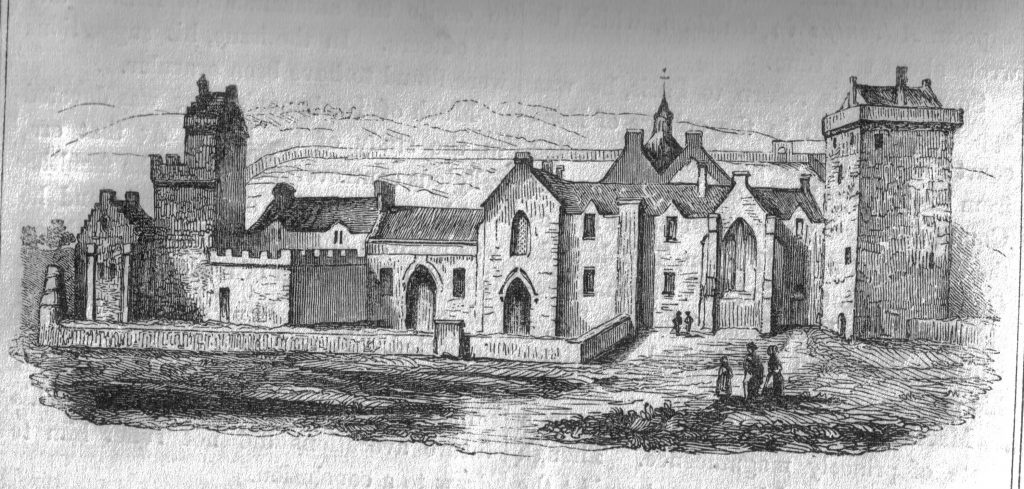
Crossraguel Abbey near Maybole, Ayrshire: A McElvain was designated the baillie or administrator for the abbey in 1523. On the left, approximately one and a half miles southwest of Maybole toward Kirkoswald on the A77
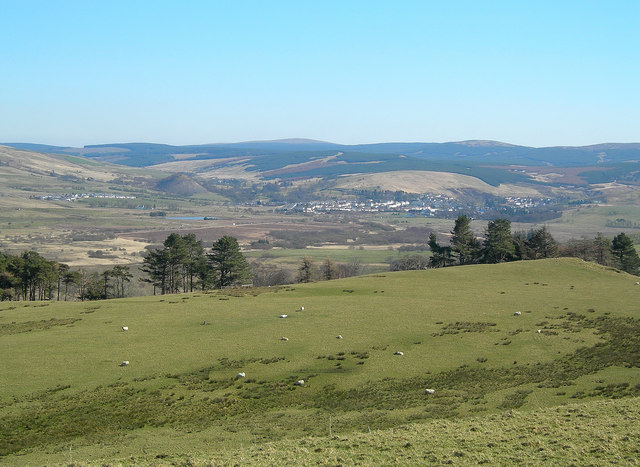
Looking across the Doon Valley from above Grimmet Farm. In the background, from the left, are Burnton, an old coal bing and Dalmellington. Copyright Mary and Angus Hogg and licensed for reuse under this Creative Commons Licence.
Grimmet Farms-Grimmet near Dalmellington: The original land granted to the family along with Attiquin. On the right, two miles west of Dalmellington toward Straiton on the B 741. Grimmet near Maybole: Possibly a minor holding of the family. On the north edge of Maybole on the A77, go east on the road to Kirkmichael. Continue east until you hit the B7405 at Harkieston Bridge (may or not be marked). Go left (north) on the B7405. There will be a curve to the right where the road continues in somewhat of a half circle. When the half circle stops and resumes going fairly north, Grimmet will be the group of buildings on your right. There was what may have been a private airfield runway off to the right on the property.
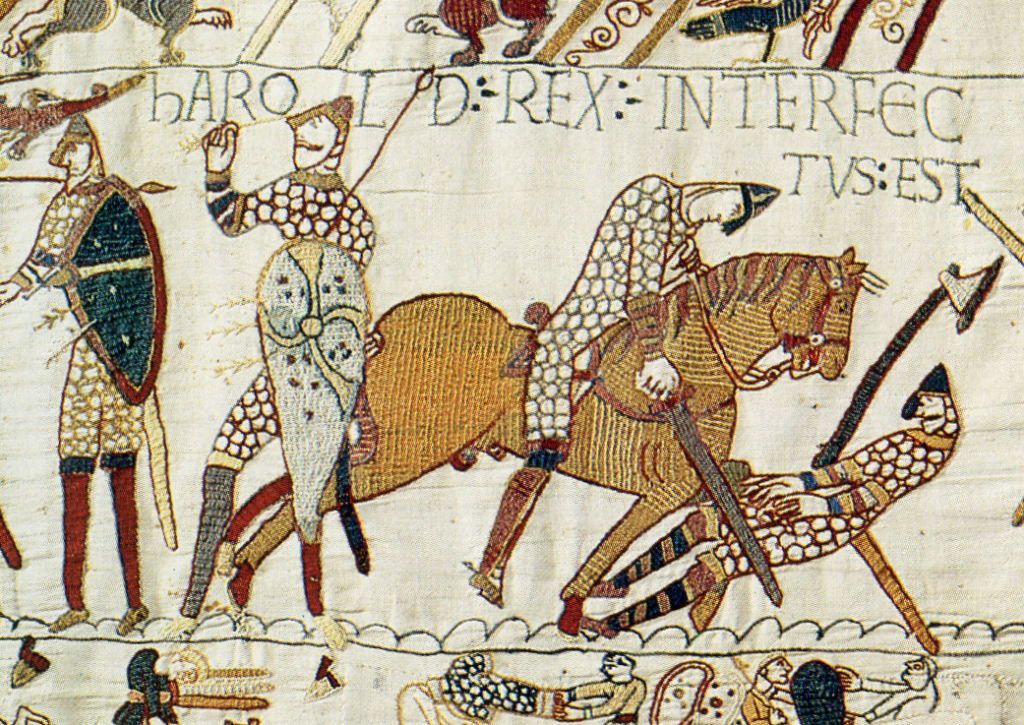
Hastings (Battle of ): A McElvain ancestor led a significant force that took part in this battle on the side of the Normans. The town of Battle and Battle Abbey are on the A2100, just northwest of the southern coastal town of Hastings.
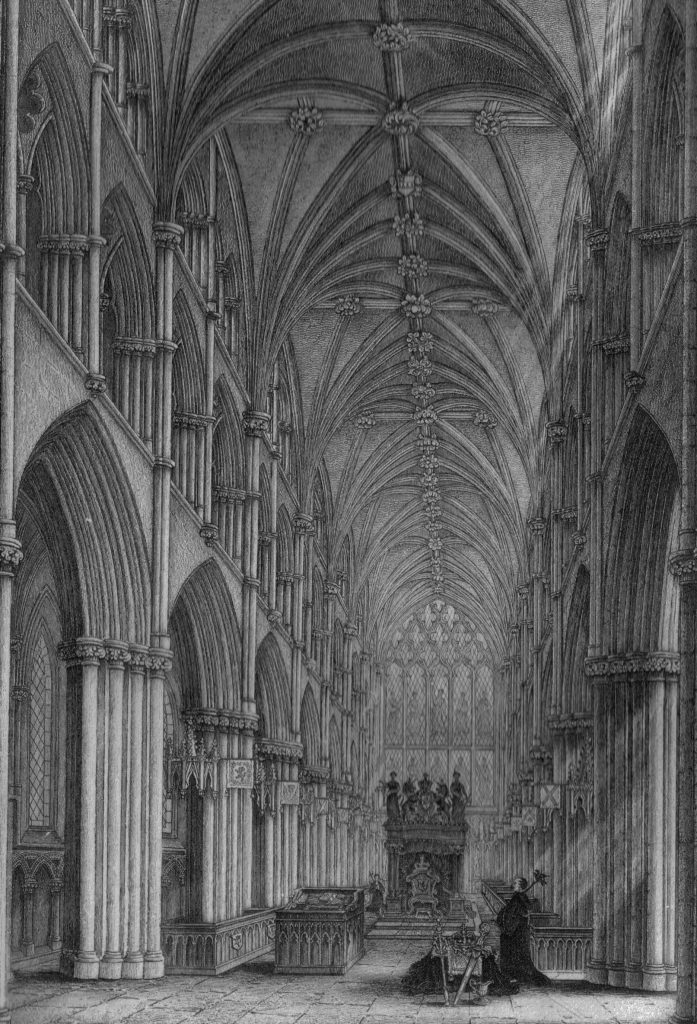
Holyrood Abbey, Edinburgh, Scotland: The first Abbot of the abbey was a possible ancestor of the family given special dispensation to marry after his only brother died without heirs. On the east end of the Royal Mile in Edinburgh.
Lady Cross/Gorse (Battle of), near Maybole (south of Ayr on the A77), Ayrshire, Scotland: Scene of a battle between factions of the Kennedy family. The McElvains took part on the side of the faction that set up the successful ambush. Go west out of Maybole on the road to Culzean Castle. After passing West Enoch Farm, turn right. On the left after you clear the trees and on the other side of the stream will be the Trees Farm. Halfway between the West Enoch Farm and Trees Farm is the approximate location of the battle/ambush.
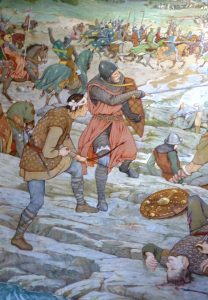
Largs (Battle of), Ayrshire, Scotland: The Battle of Largs in 1263 marked the end of Viking interest in the west coast of Scotland. For his part in the victory, a McElvain was granted lands in Ayrshire. Largs is on the coast north of Ayr on the A78, or west of Lochwinnoch and Kilbirnie on the A760.

MacIlveenston, near Dalrymple, Ayrshire, Scotland: A group of ruined farm buildings is all that’s left of MacIlveenston, a village that had been in that location for several hundred years. As you travel south out of Dalrymple on the B742, you will cross a bridge over the River Doon. Disregard the first left on the south side of the river and continue to the next left. There will be two roads intersecting from the left, one hard left and another that continues almost straight up a hill. Take the hard left. After a short roller coaster ride up and down, the road will turn right then left. Continue straight past the settlement of Netherton (on the left). There will be a farm road off the main road to the right that may have piles of hay covered with tires and turns into a path. Up this path and on the right are the ruined buildings.
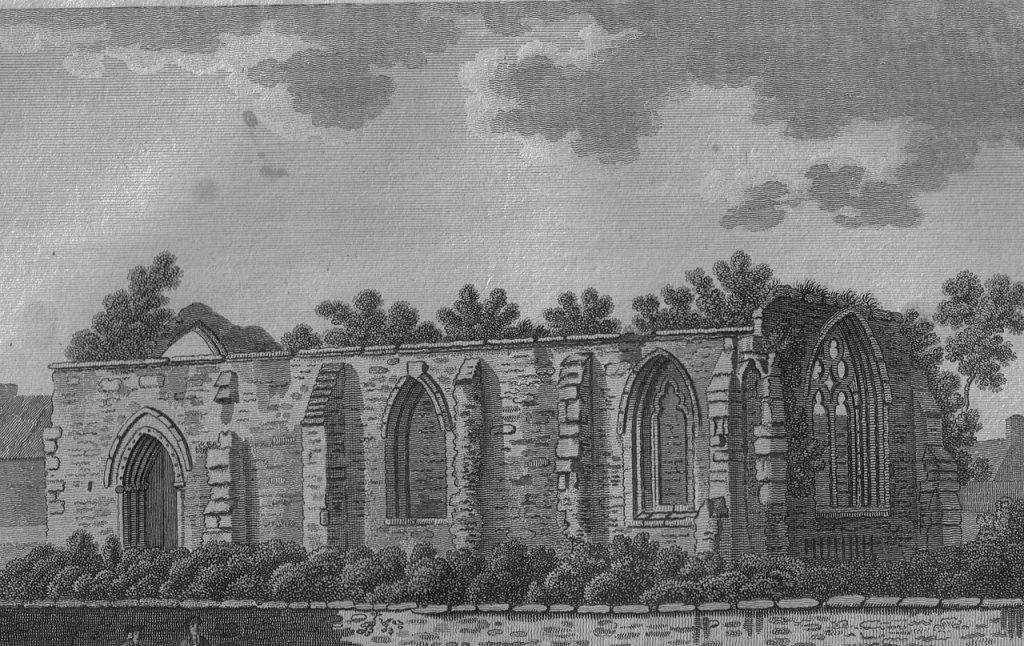
Maybole Collegiate Church Cemetery: site of 1618 grave marker mentioning ancestor Agnes McIlven. The marker, like a table with two slab legs, is on the far end of the cemetery, straight across the cemetery from the entrance. Maybole is south of Ayr on the A77.
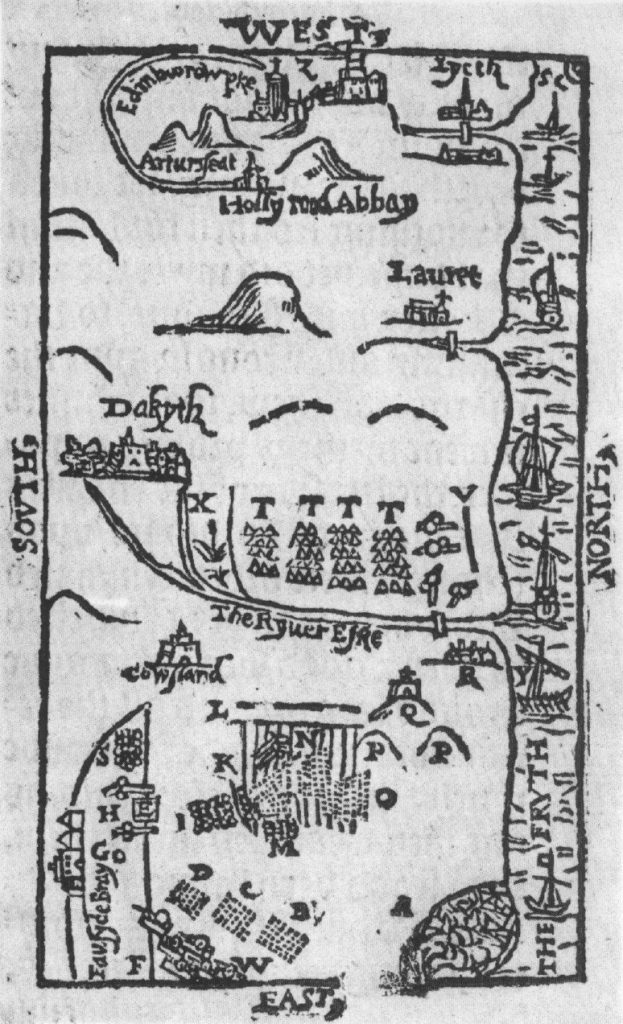
Pinkie/Musselburgh/Fawside (Battle of): A McElvain, Laird of Grimmet, was killed in this Scots disaster in 1547. Musselburgh is a suburb on the coast just east of Edinburgh. The battle took place in a large area around the River Esk and community of Inveresk.
Sea Rock Mhic Chomhain (McElvain in Gaelic): Off Craignure, Isle of Mull, Scotland: The nearest island off the golf course north of Craignure. As you travel north of Craignure on the main road, the road will cut across land for a short distance. As you come back by the shore, the golf course will be on your right. There may appear to be three islands. The closest will actually be a peninsula from the golf course.
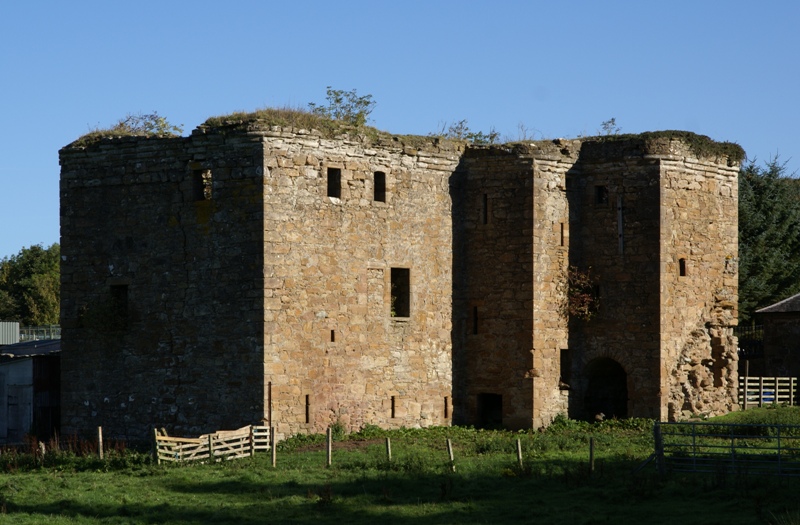
Thomaston Castle, near Culzean Castle, Ayrshire, Scotland: A castle the McElvains gained through marriage to the Corries in the 1600s. On the west side of the A719, approximately a quarter mile south of the entrance to Culzean Castle. Take the road to Culzean Castle from Maybole and continue past the entrance to Culzean Castle.
Chief's Relm
Click on image to view Genealogy of the Chiefs of the Clan MacBean in window with a zoom feature, or click on this
McBain Park History
The park was born in the summer of of 1960, by 1963 we had our first loss, heather. An excerpt from An American Scottish Chief tells the story.
"I engaged Mr. D.A. MacKinnon of Howden & Co., Inverness, to plant our heather. By the end of the third year we had 20 different varities and they were doing well. Then came trouble! Visitors from all over the world would not only clip the heather blossoms, but pull up whole plants! (And I'm afraid all too many were Scots!) Pondering as to a solution, I decided that the usual "Don't touch" or "Keep off" signs would do no good. So (after a few Scotches one night)

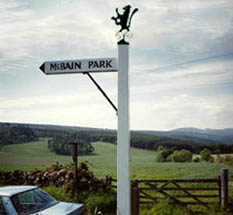
I dreamed up signs with a lighter, friendlier touch: "McBain Memorial Park - No burial ground - no bodies around" "A thief one day, to our dismay, took plants away, he'll rue that day!" "Please let us stay; we want to cheer you, on your way!" "Let me be, I'm just a wee tree!'' After these were installed, securely fastened, at least 80 percent of the pilfering stopped. I still believe the thieves were not professional - just clansmen who wanted "a wee bit of the Chief's heather" to take home for planting."
The next casualty was the road sign marking the turn off to the Park from the A.862 road near Dores. This sign was placed in service in 1963 and by 1970 this sign along with it's replacement were gone. As with the heather we feel these loses were due to souvenir collectors. When we replace the sign it might be a very heavystone. The last two thefts are the most hurtful. The two defiant bronze cats, taken in 1997, and the bronze plaque taken in 2011. Even though these items were very securely fastened we feel the melt down value of the bronze made these pieces too vulnerable. As discussed in "Phase 1" the replacement art will be made out of other materials.
McBain Park Thiefs
The park was born in the summer of of 1960, by 1963 we had our first loss, heather. An excerpt from An American Scottish Chief tells the story.
"I engaged Mr. D.A. MacKinnon of Howden & Co., Inverness, to plant our heather. By the end of the third year we had 20 different varities and they were doing well. Then came trouble! Visitors from all over the world would not only clip the heather blossoms, but pull up whole plants! (And I'm afraid all too many were Scots!) Pondering as to a solution, I decided that the usual "Don't touch" or "Keep off" signs would do no good. So (after a few Scotches one night)
I dreamed up signs with a lighter, friendlier touch: "McBain Memorial Park - No burial ground - no bodies around" "A thief one day, to our dismay, took plants away, he'll rue that day!" "Please let us stay; we want to cheer you, on your way!" "Let me be, I'm just a wee tree!'' After these were installed, securely fastened, at least 80 percent of the pilfering stopped. I still believe the thieves were not professional - just clansmen who wanted "a wee bit of the Chief's heather" to take home for planting."
The next casualty was the road sign marking the turn off to the Park from the A.862 road near Dores. This sign was placed in service in 1963 and by 1970 this sign along with it's replacement were gone. As with the heather we feel these loses were due to souvenir collectors. When we replace the sign it might be a very heavystone. The last two thefts are the most hurtful. The two defiant bronze cats, taken in 1997, and the bronze plaque taken in 2011. Even though these items were very securely fastened we feel the melt down value of the bronze made these pieces too vulnerable. As discussed in "Phase 1" the replacement art will be made out of other materials.
Phase 1 "The Plaque is Back!"
On June 6th 2014 the new McBain Plaque came home.
Three years from the somber day we all learned from Tom Bean of the vandalism that befell the our family land.
Moira Geoffrion, recently retired head of the University of Arizona Art Department created our new plaque. There were several goals in the replacement design. First, should the new plaque look like bronze. Second it most be made of materials that do not have the inherent value of bronze. Third must stand the test of time. Well done Moira!
Thanks to Lisa McFarlane who penned a new sign to help this plaque stay in the park.
BRONZE, BRASS OF WORTH
MONEY I AM NOT
LEAVE IT TO A FRUGAL SCOT
SO STEAL ME NOT
LEAST YOU BE CURSED
AND DIE AMONGST
ALL KINSMEN FIRST
Phase 2 Journey of the Cats
After the thefts ending in 2011, we as a clan did the heavy lifting that Celts are famous for to restore our Park on be behalf of our Chief James McBain of McBain 22nd hereditary Chief of the ancient clan MacBean, our forefathers and all clans people around the world. On August 5th 2016 McBain Memorial Park hosted a rededication ceremony to celebrate the return of the cats. Many thanks to those that donated time, skills, and funds in recognition of the importance of this wee bite of land in the Highlands of Scotland. Peter McIllwain, Clan president, brought 22 clans people from Australia, Canada, and many parts of the United States to the celebration. In total we had fifty plus and a drone. Also present by way of Peter McIllwain was the MacBean tartan taken to the moon by Alan Bean Nov. 20, 1969. Yes it's true this piece of tartan was taken to the moon, to the surface, and back to planet earth, and now back to the lands of the ancient clan MacBean in Kinchyle Scotland. If you're a member you can read a great article about the trip to Scotland by Peter McIllwain in the members section of this site. If you are not you are missing out.
The journey began with an artist, Moira Marti Geoffrion, former head of the University of Arizona Art department, who accepted the request of Richard McBain Tanist to donate her skills to create the cats which stand today at McBain Memorial Park. Her sculptures give the Park a human touch with something created by her hands only. The cost of creating two one of a kind pieces and shipping them across the pond to Scotland, and installing, isn't cheap. Thanks to James McBain of McBain's passion to support all things Celtic. Our Chief has volunteered his time to attend all of the highland games in Arizona, some for over 38 consecutive years. Jude Mackenzie, who runs the Flagstaff Games in Arizona, took fundraising for this project as a challenge. As a thanks to James McBain of McBain, Jude challenged the other highland games of Arizona to match the Flagstaffs donations to the cause, and they did.
We MacBeans are part of a larger family and that family is Clan Chattan. August 4th 2016 at the Clan Chattan AGM Piper Cindi McIntosh-Behr volunteered to Pipe at the rededication and her contribution was amazing. Thank you Celia Mackintosh of Moy Hall for hosting the Cats, the plaque, and me Richard McBain of McBain younger during the entire construction efforts. Finally, a special thanks to Lisa McFarlane my partner... It was her idea to travel light, very light, so the Cats could be our luggage... saving hundreds.
Phase 3 The road sign returns
In 1963, Hughston McBain of McBain 21st hereditary Chief was granted permission by the “road authorities” to place a sign on the A.862 road near Dores to mark the turn off to McBain Park. Sadly it was taken only few years later. By the late 1960s the second road sign installed by James McBain of McBain 22nd hereditary Chief was also removed.
Thanks to Allan MacBain, clan MacBean UK genealogist, for finding Alistair MacLeod, Principal Technician for the Highland Council Community Services, Inverness. In response to a request by Clan Tanist, Richard, for permission to replace the sign Alistair replied “We are constrained by the requirements contained within current legislation and guidance, and a modern day directional sign would need to fit within certain set standards. As a compromise we would be content for a sign, similar to that shown in the photo supplied by you, to be erected at the rear of the verge next to the field boundary fence.”
With this great news in hand a new sign has been commissioned.
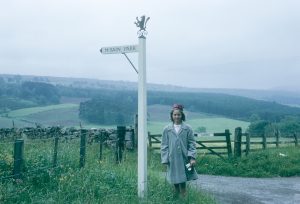
Phase 4 The donation cairn
In honor of those institutions, and people, who donated 200.00 dollars or more to the Restore the McBain Memorial Park fund a cairn will placed in the Park with their names engraved on the stones. The final design and placement within the Park for this important monument is still in the developmental stage so check back often for details. Work on this project will start once Phase 3 (the road sign) is complete. It’s not too late to have your name placed on a stone so consider a donation today. It is tax deductible.
McBain Park Donations
You may not know but there is a Clan MacBain memorial park in Scotland on the slopes of Loch Ness. Up to this point the Chief has maintained these grounds but we want to enable all who wish to support this cause. Go to this page to see some pictures of the park and learn about what you can do to help out!
This is Modal Title
An American astronaut who commanded Appollo XII to the Moon in 1969. He took a Clan MacBean tartan on his journey to the moon and brought it back to Earth. He gave a piece of the tartan to the Clan. A small portion was also attached to one of Alan’s paintings (Clan MacBean Arrives on the Moon, pictured below) and he presented it to the Clan at its 1996 Gathering. There is also a small portion that hangs in Scotland commemorating the event. You can learn more about Alan and this story at Alan Bean’s Website.
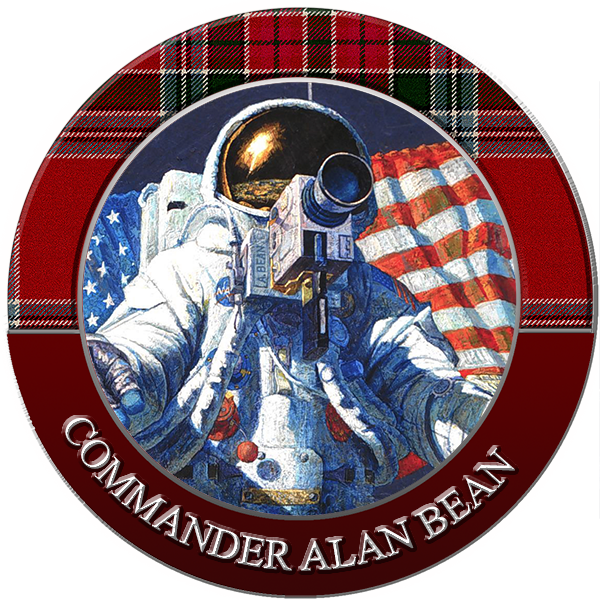
This is Modal Title
This marble bust is on display in Inverness Town House, on the staircase, on the right hand side of the landing. The inscription reads:
“Major General William Macbean V.C. 93rd Sutherland Highlanders. Born at Inverness January 1819. Died at Woolwich 22nd June 1878. Who served with great distinction at the Crimean War and Indian Mutiny. Presented to the Town in 1897 by the family of his brother the late Dean of Guild James Macbean.”
William Macbean enlisted as a young man in the 93rd Sutherland Highlanders, the regiment he remained with until he retired. He spent fifteen or sixteen years in the ranks as a non-commissioned officer. In 1854, while serving in the Crimea, he was raised to the rank of ensign. At Varnia he was in charge of the wounded men when he successfully intervened in a dispute between French and Turkish troops. He was awarded the ‘Order of Medjidie’ by the Sultan.
Macbean served at the siege of Sebastapol. In India he was honoured with the Victoria Cross for his actions at the main breach of the Begum Bagh at Lucknow in 1858, where he single-handedly killed eleven of the enemy. In 1873 he attained the rank of Lieutenant Colonel and on his retirement in 1877 he was accorded the rank of Major General.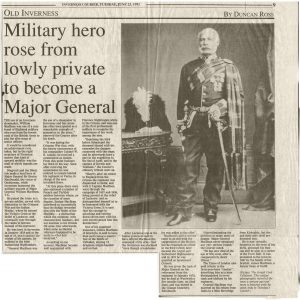
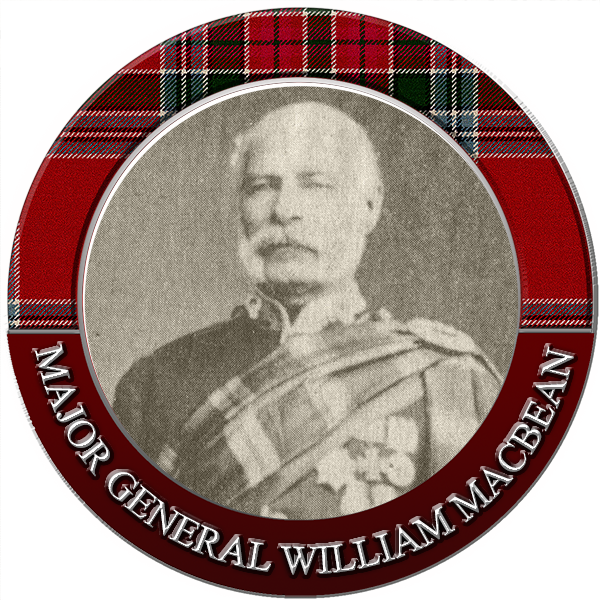
Edward and Ethel Bean
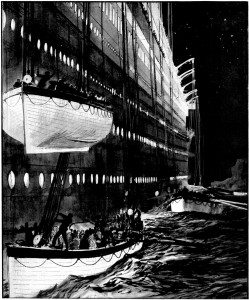
Edward and Ethel Bean were second-class passengers. Edward had lived in New York for a time. After waiting several years for his return from America, Ethel finally married Edward when he returned to England. The newlyweds chose Titanic to carry them to their new life together. When the ship starting sinking Edward helped Ethel into Lifeboat 13.
Here is their story from an article “Women Work Hard for Rescued Folk” in the New York Times, Sunday April 21, 1912:
Beane is a bricklayer, and Ethel, his wife, was maid in a Norwich household. Between them they had stored away $500, and sixty-five wedding presents were lost with the money. Beane stood back at the cry of, “No, only women!” when his bride was placed in one of the lifeboats. But as he stood back manfully he saw that boat pull off and it was only half filled. And he jumped into the sea and swam for that boat, and Ethel Beane’s arms pulled him in.
Mr. Bean was one of the few people who survived after being in the water. It’s amazing that the woman he loved pulled him from the freezing waters!
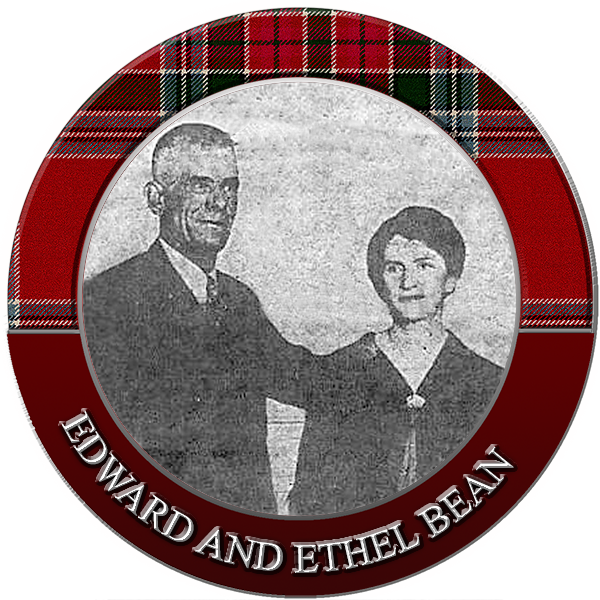
This is Modal Title
Gillies MacBain
A captain in the Mackintosh Regiment at Culloden killed 14 Hanoverian soldiers before being cut down by the cavalry. He was an unusually tall man, of 6’7″. An opening was discovered in a wall and Gillies stepped in and filled the breach and killed the Hanovarians before being killed himself.
Lord Byron, a British Poet wrote:
“The clouds may pour down on Culloden’s red plain,
But their waters shall flow o’er its crimson in vain,
For their drops shall seem few to the tears for the slain,
But mine are for thee, my brave Gillies MacBain!
“Though thy cause was the cause of the injured and brave;
Though thy death was the hero’s and glorious thy grave,
My sad heart bleeds o’re thee, my Gillies MacBain!
“How the horse and the horseman thy single hand slew!
But what could the mightiest single arm do?
A hundred like thee might the battle regain;
But cold are thy hand and heart, Gillies MacBain!
“With thy back to the wall and thy breast to the targe,
Full flashed thy claymore in the face of their charge:
The blood of their boldest that barren turf stain,
But, Alas! Thine is reddest thee, Gillies MacBain!
“Hewn down, but still battling, thou sunk’st on the ground –
Thy plaid was one gore, and thy breast was one wound;
Thirteen of thy foes by thy right hand lay slain
Oh! Would they were thousands for Gillies MacBain!
“Oh! Loud and long heard shall thy coronach be,
And high o’er the heather thy cairn we shall see;
And deep in all bosoms thy name shall remain
But deepest in mine, dearest Gillies MacBain!
“And daily the eyes of thy brave boy before
Shall thy plaid be unfolded, unsheathed the claymore;
And the white rose shall bloom on his bonnet again
Should he prove the true son of my Gillies MacBain!”
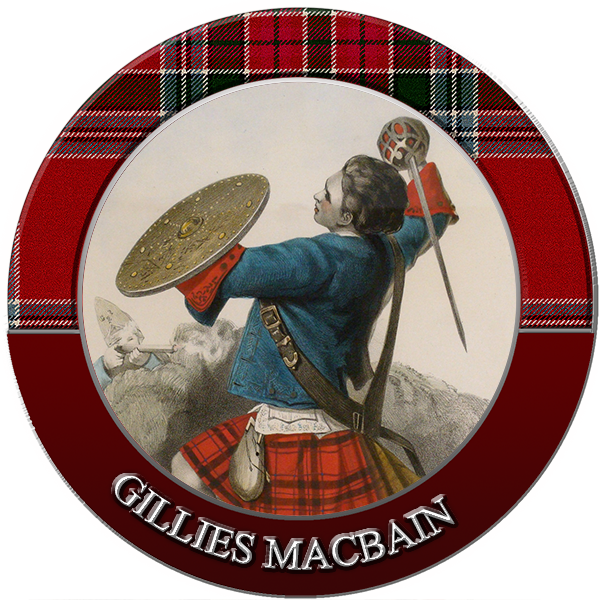
Marnie Elizabeth McBean
Marnie Elizabeth McBean, OC MSM (born January 28, 1968 in Vancouver, British Columbia) is a Canadian rower.
A graduate of the University of Western Ontario, McBean competed at the 1992 Summer Olympics in the coxless pairs and eights events, winning gold medals in both. At the 1996 Summer Olympics she competed in the double and quadruple sculls, winning gold in the double and bronze in the quadruple.[1] With her long-time rowing partner Kathleen Heddle, she was the first Canadians to win three Olympic Gold medals. In addition to her other exploits, McBean won a Silver medal in the prestigious single scull event at the 1993 World Rowing Championships.
Read more: wikipedia.org - Marnie McBean
| Medal record | ||
|---|---|---|
| Women’s Rowing | ||
| Competitor for |
||
| Olympic Games | ||
| 1992 Barcelona | Coxless pairs | |
| 1992 Barcelona | Eights | |
| 1996 Atlanta | Double sculls | |
| 1996 Atlanta | Quadruple sculls | |
| Pan American Games | ||
| 1999 Winnipeg | Single sculls | |
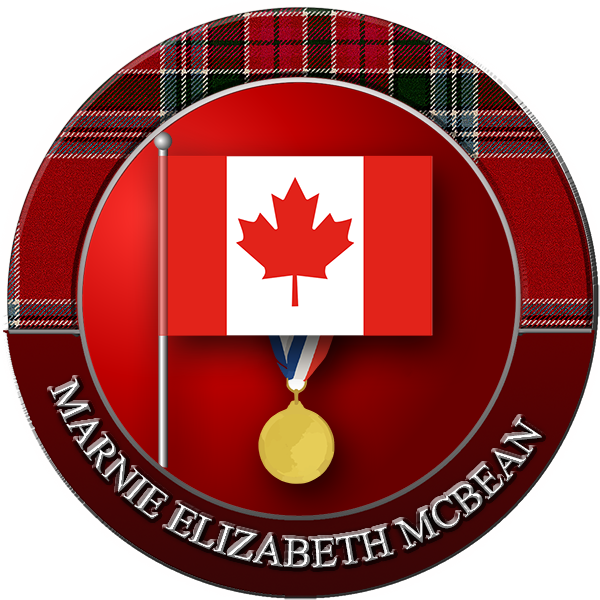
LL Bean
“More heady than love, ladies or liquor is the sporting-goods catalog of L. L. Bean, outfitter extraordinary to men who live so they may hunt and fish,” read Life magazine’s encomium to the entrepreneurial outdoorsman in October of 1941.
Leon Leonwood Bean From modest beginnings in 1911, sales at Leon Leonwood Bean’s Freeport mail order business had surpassed the $1 million mark by 1937.
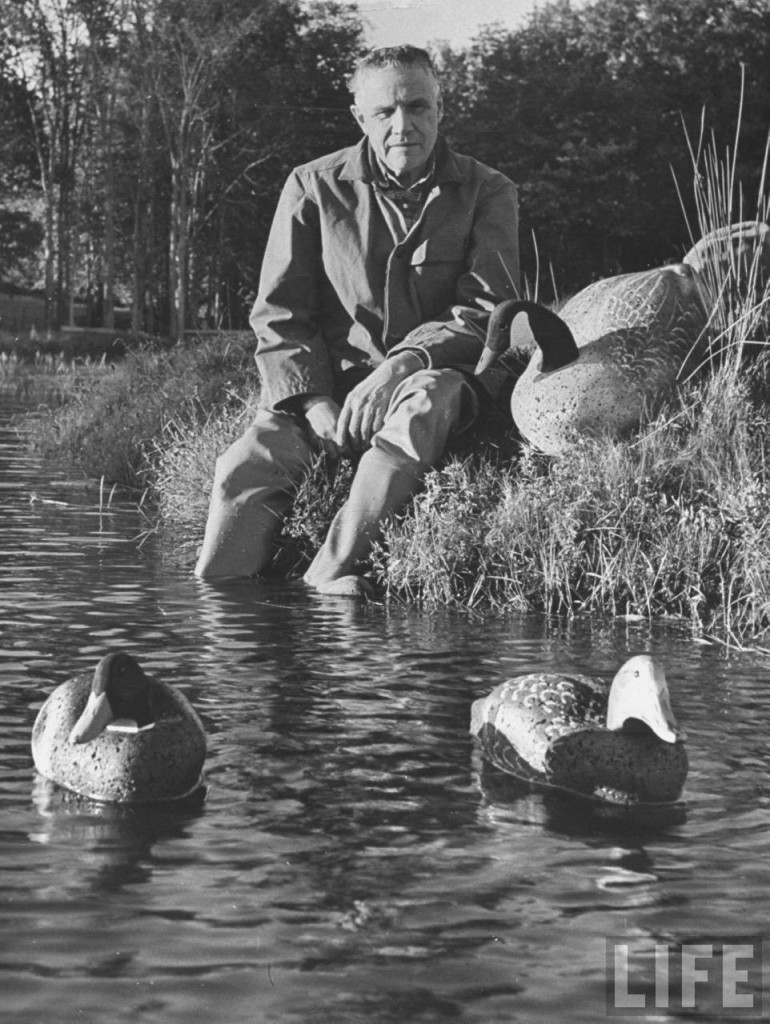
Born October 13, 1872 Greenwood, Maine Died February 5, 1967 (aged 94) Pompano Beach, Florida
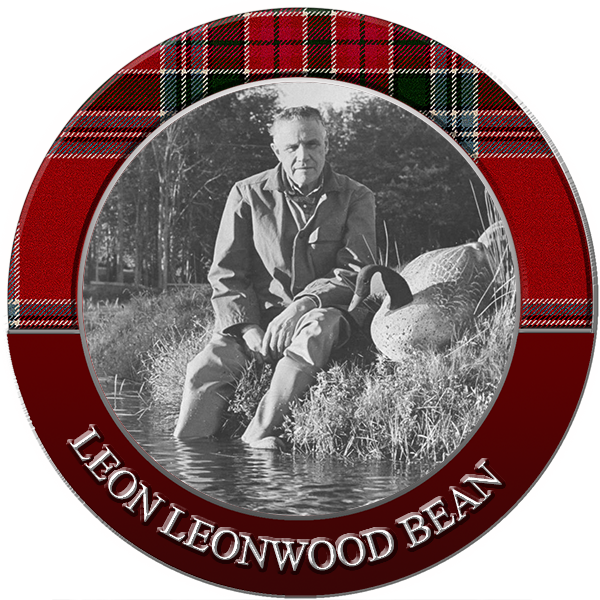
Donald McBane Expert Swordsman and author
Expert Swordsman
ONE OF MARLBOROUGH'S MEN, AN EIGHTEENTH CENTURY SOLDIER.
Extract from an autobiography published in Glasgow in 1728;
"The Expert Swordsman's Companion" or "The True Art of Self Defence"
“We were marching to give the French battle. When they heard of our advance they entrenched themselves. When we came up they cannonaded us for two days. I had two children at this time. Our wives were far in the rear. My wife gave my little boy to a comrade’s wife who had a horse. The woman hearing her husband was dead, she rode until she saw me in the front of the line, then she threw the boy at me. I was obliged to put him in my habersak. As we were inclining to the right the boy got shot in the arm. I then got a surgeon and dressed it. I had neither bread nor drink to give him. I got a dram to him from an officer and a leg of fowl. He then held his peace and was very quiet all night. In the morning his mother took him from me.”
Much more can be found about Donald at about Scotland
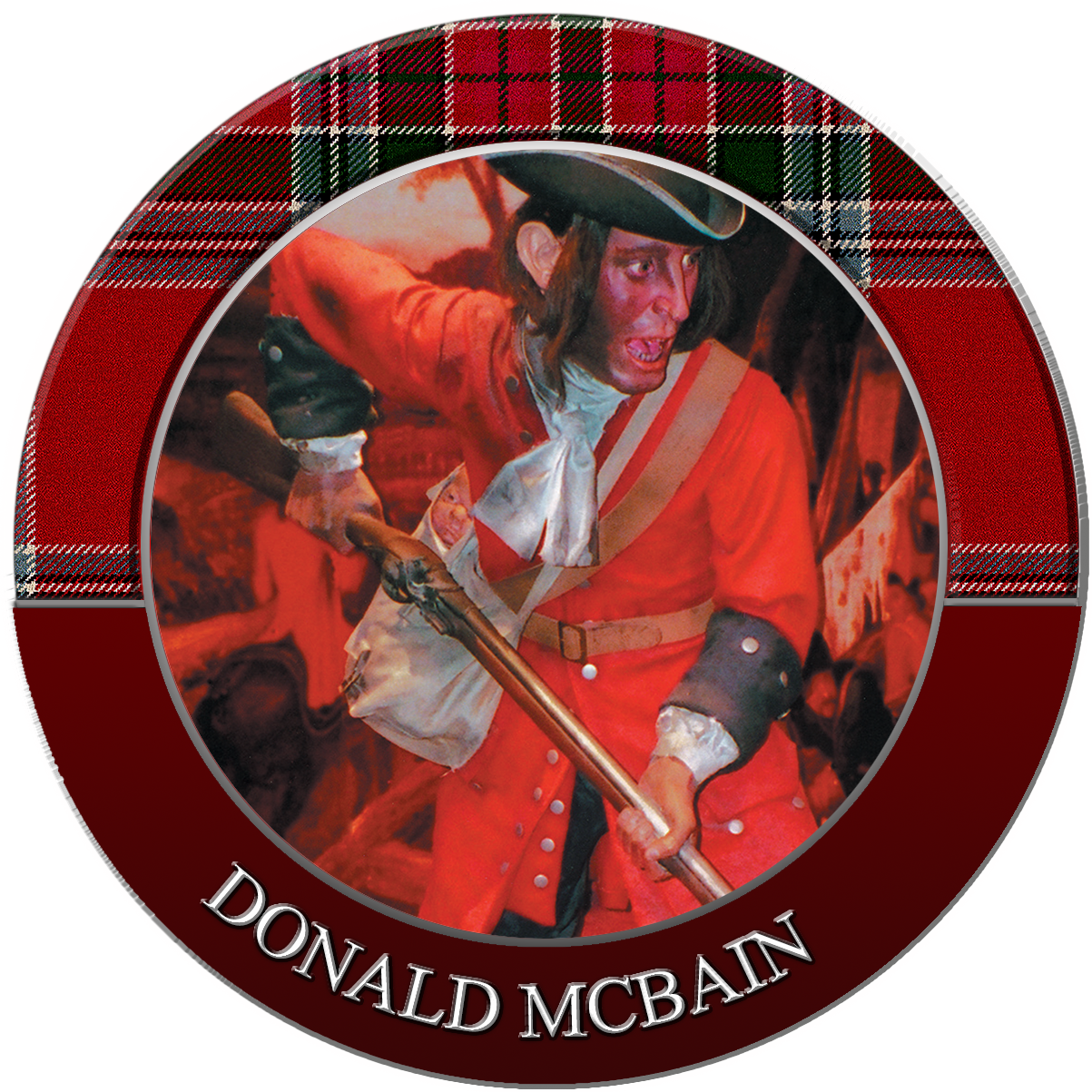
Doug MacClaren
Climbed Mt. Everest in 2001 and placed a piece of the Clan tartan at the top of the world. Doug is cousin to Marnie McBean. As he stood on the top of the mountain he said:
“Peter, Sherrill, Alex, Ian, Jamie, Jessica, Teal, Marnie & John, I gather from Ian that there is a piece of McBean tartan somewhere on the moon. Well a little more terrestrial, but there is now a swatch of McBean tartan (provided to me by Ian) fluttering proudly at the summit of Everest. Just where the name belongs – at the top of the world.
All the best, Doug”

This is Modal Title
Phantly Roy Bean, Jr. (c. 1825 – March 16, 1903) was an eccentric U.S. saloon-keeper and Justice of the Peace in Val Verde County, Texas, who called himself "The Law West of the Pecos". According to legend, Judge Roy Bean held court in his saloon along the Rio Grande on a desolate stretch of the Chihuahuan Desert of southwest Texas. After his death, Western films and books cast him as a hanging judge, although he is known to have sentenced only two men to hang, one of whom escaped. Read more at Wikipedia - Roy Bean
